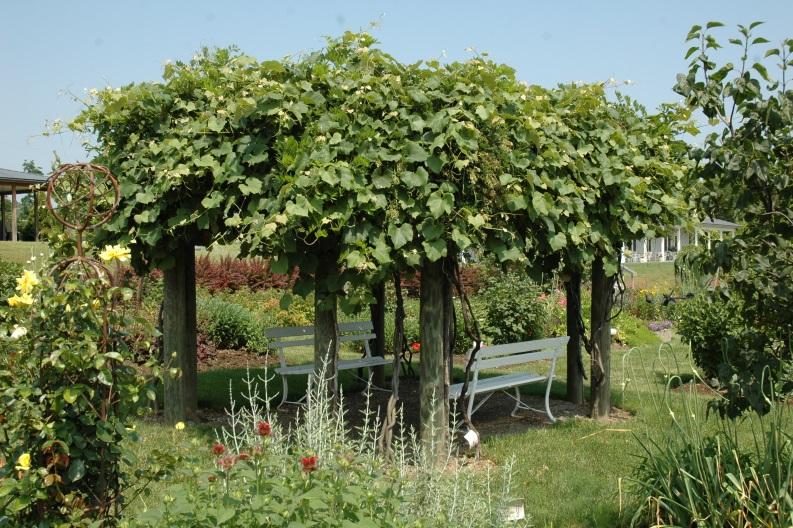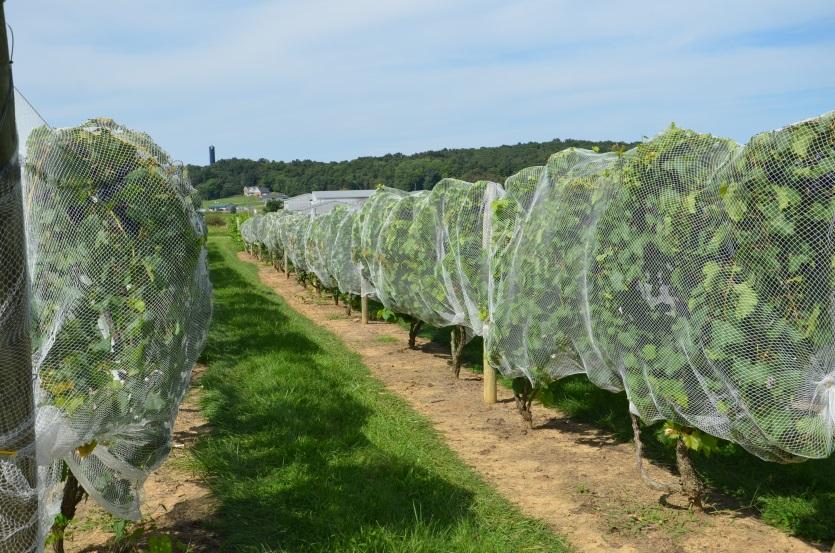Are you looking to add a touch of elegance and flavor to your home fruit garden? Look no further than growing grapes. Grapes are not only a delicious fruit for fresh consumption, but they can also be transformed into jam, jelly, juice, pie, or even wine. Additionally, grapevines can serve as attractive and valuable shade or screen plants when trained on a trellis or arbor. With proper care and attention, a well-maintained grapevine can produce an impressive 20 pounds or more of fruit per year and remain productive for over four decades.
Selecting the Right Varieties
When choosing grape cultivars for your home planting, it’s important to consider your local climate and growing conditions. American and French hybrid grape types are generally more suitable for Ohio’s climate due to their winter-hardiness. Look for cultivars with excellent taste and good disease tolerance. Tables 1 through 4 provide suggestions for grape cultivars and their characteristics, including color, winter hardiness, and ripening season.
Planting and Establishment
Early spring is the ideal time for planting grapevines, as fall planting increases the risk of losing plants to heaving during the first winter. During the establishment phase, it’s crucial to prepare the soil, select cultivars, and provide proper support and protection for the vines. Pruning off any broken or dead portions of branches and roots is essential. Tying the vines to a stake, keeping them off the ground, and providing supplemental watering during dry seasons are all part of the process to ensure vigorous growth during the crucial first year.
Pruning and Training Techniques
Annual pruning is vital for a consistent yield of high-quality fruit. The best time to prune grapevines is in the dormant season after the danger of severe cold weather has passed. Understanding the different types of canes and their roles in fruiting and renewal is crucial for proper pruning. Grapevine training systems, such as the single curtain/cordon bilateral system, allow for optimal fruit production and ease of maintenance. Attending training programs on grape pruning can further enhance your skills in this area.
Fertilizer, Lime, and Pest Management
Conducting a soil test is recommended to determine the fertilizer and lime (or sulfur) requirements for your grape planting. Grapes thrive in soils with a pH between 5.0 and 6.0. Fertilizer application rates should increase gradually as the vines mature. Effective pest management involves selecting disease-tolerant cultivars, maintaining good sanitation practices, managing vine canopies for proper air circulation, and implementing an appropriate spray program. Common grape diseases include black rot, downy mildew, powdery mildew, and botrytis bunch rot, while major insects and mites include grape berry moth, Japanese beetle, and European red mite.
Enjoy the Fruits of Your Labor
Growing grapes at home can be a truly rewarding experience. Not only will you have access to your favorite grape varieties that may not be available in stores or farmers markets, but you will also develop a greater appreciation for the high-quality grapes produced by commercial grape growers. For additional information on grape production, pruning, and cultural management practices, refer to the resources provided in the useful references section.
Useful References:
- Dami, I., B. Bordelon, D. Ferree, M. Brown, M. Ellis, R. Williams, D. Doohan. 2005. Ohio State University Extension Bulletin 919, Midwest Grape Production Guide.
- Ellis, M, and C. Welty. 2010. OSU Extension Bulletin 780, Controlling Disease and Insects in Home Fruit Plantings.
- Gao, G., R. Becker, M. Brown, M. Ellis, S. Prochaska, C. Welty, and R. Williams. 2017. Ohio State University Extension Bulletin 940, Midwest Home Fruit Production Guide.



